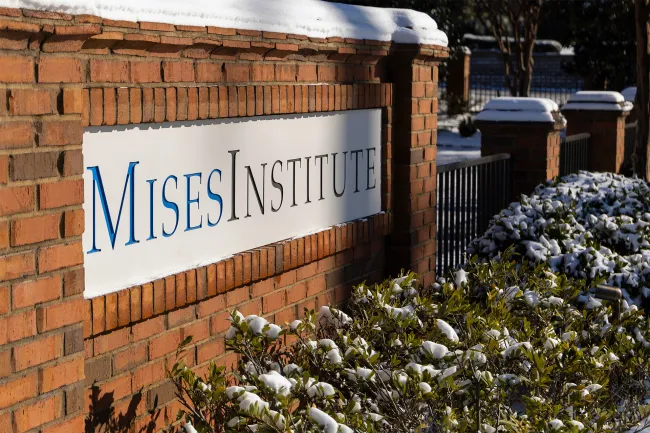Today’s politicians are heavily indebted to Alexander Hamilton for pushing the machinery of big government under their control. In assessing Hamilton’s role, it’s important to remember that the country formally began for the second time in 1789 when the Constitution was ratified by nine of the thirteen states. Neither the Articles of Confederation nor the Constitution would have been created had it not been for the Declaration of Independence in 1776.
Even after Common Sense, the idea of secession was not greeted with unanimous approval. About 20 percent of the population remained loyal to Britain, and many left the country during or after the war. The loyalists had their own heroic writer, James Chalmers, who penned a response to Paine that ends by declaring “independence and slavery are synonymous terms.” It wasn’t a popular sentiment. Another 20-30 percent rallied with the revolutionaries, while the majority couldn’t make up their minds, though that started to change after Washington’s first victory—the Battle of Trenton—and Paine’s first American Crisis essay.
Then there was still the technical matter of getting members of the Continental Congress to sign a treasonous document. Would today’s Congress underwrite any document that claimed it was their right and duty to throw off such governments that violated man’s inalienable rights? How could they? Their business is defending “national security,” not protecting individual rights.
Fifty-six members of the Congress signed the Declaration. Many were lawyers and merchants. All were well educated and most were at least moderately wealthy. John Hancock—perhaps the wealthiest—signed in a bold and stylish manner so that, according to legend, George III would not need glasses to read it. It has since become a synonym for “signature.” All 56 signers were willing to risk their “lives and fortunes” to support the Declaration.
The lawyers, at least, were likely well-versed in James Otis, Jr.’s court battle against the Crown’s writs of assistance, which “were broad search warrants that allowed British customs officials to search property without a court order and force law enforcement officials to help them.” According to John Adams’s reconstruction of Otis’s four-hour oration, he was so thorough and eloquent that “every man of a crowded audience was ready” to take up arms against the Crown. Otis said a man’s home is his castle and, if he behaves quietly, he must be as well-protected as a prince. In journalist A. J. Langguth’s words, Otis was saying,
Every man was his own sovereign, subject to laws engraved on his heart and revealed to him by his Maker. No other creature on earth could legitimately challenge a man’s right to his life, his liberty and his property. That principle, that unalterable law, took precedence. . .even over the survival of the state.
The Issue of Sovereignty
In broad strokes, sovereignty passed from the individual in the Declaration, to the states in the Articles, to the federal government in the Constitution. The idea that drove secession—inviolable individual rights—was discarded, even after the Bill of Rights was appended on December 15, 1791. Though the Rights have binding legal force, the judge in all cases is the government itself.
Alexander Hamilton wrote 51 of the 85 Federalist Papers—his brainchild and all under the pseudonym Publius—advocating for ratification of a document, the US Constitution, that would create a stronger, more energetic federal government. Since a government of that nature was the recent object of secession, he had to take pains to avoid sounding like he wanted another England. Thus, we find in Federalist 22,
The fabric of American empire ought to rest on the solid basis of THE CONSENT OF THE PEOPLE [caps in original]. The streams of national power ought to flow immediately from that pure, original fountain of all legitimate authority.
How many American soldiers thought they were fighting for an “American empire”?
In Federalist 84, he argued against including a Bill of Rights, saying they were not only unnecessary but dangerous, “For why declare that things shall not be done which there is no power to do?” Later, he wrote,
All communities divide themselves into the few and the many. The first are the rich and well-born, the other the mass of the people. . . The people are turbulent and changing; they seldom judge or determine right. Give, therefore, to the first class a distinct, permanent share in the government. They will check the unsteadiness of the second, and, as they cannot receive any advantage by a change, they therefore will ever maintain good government. Can a democratic Assembly, who annually revolve in the mass of the people, be supposed steadily to pursue the public good? Nothing but a permanent body can check the imprudence of democracy.
We needn’t worry this is a recipe for tyranny because those rich and well-born “will ever maintain good government.” All they need are the right tools to get the job done. As Treasury Secretary under President Washington, he proposed the creation of a national bank:
It is a fact, well understood, that public banks have found admission and patronage among the principal and most enlightened commercial nations. . . .
Trade and industry, wherever they have been tried, have been indebted to them for important aid, and government has been repeatedly under the greatest obligations to them in dangerous and distressing emergencies.
Hamilton’s model for an American national bank was the Bank of England, which had been around since 1694.
[It] unites public authority and faith with private credit, and hence we see what a vast fabric of paper credit is raised on a visionary basis. Had it not been for this, England would never have found sufficient funds to carry on her wars; but with the help of this, she has done, and is doing, wonders.
Hamilton was correct. The Bank had been indispensable in funding England’s wars with its “vast fabric of paper credit [no doubt raised] on a visionary basis.” And it is continuing along this path today:
It serves as a fundamental tool for influencing interest rates throughout the economy. Changes in the base rate directly impact borrowing costs for individuals, businesses, and financial institutions. The Bank of England’s interest rates are pivotal in shaping the UK’s monetary policy and influencing borrowing costs for individuals and businesses.
Sound familiar? Who would disagree that the Federal Reserve creates a vast fabric of digits on a visionary basis, its vision being to keep the government loaded with debt so it can practice war anywhere it wishes as dollar-holders see their purchasing power plunge ever closer to zero. George Will was right. We honor Jefferson, but live in Hamilton’s country.


